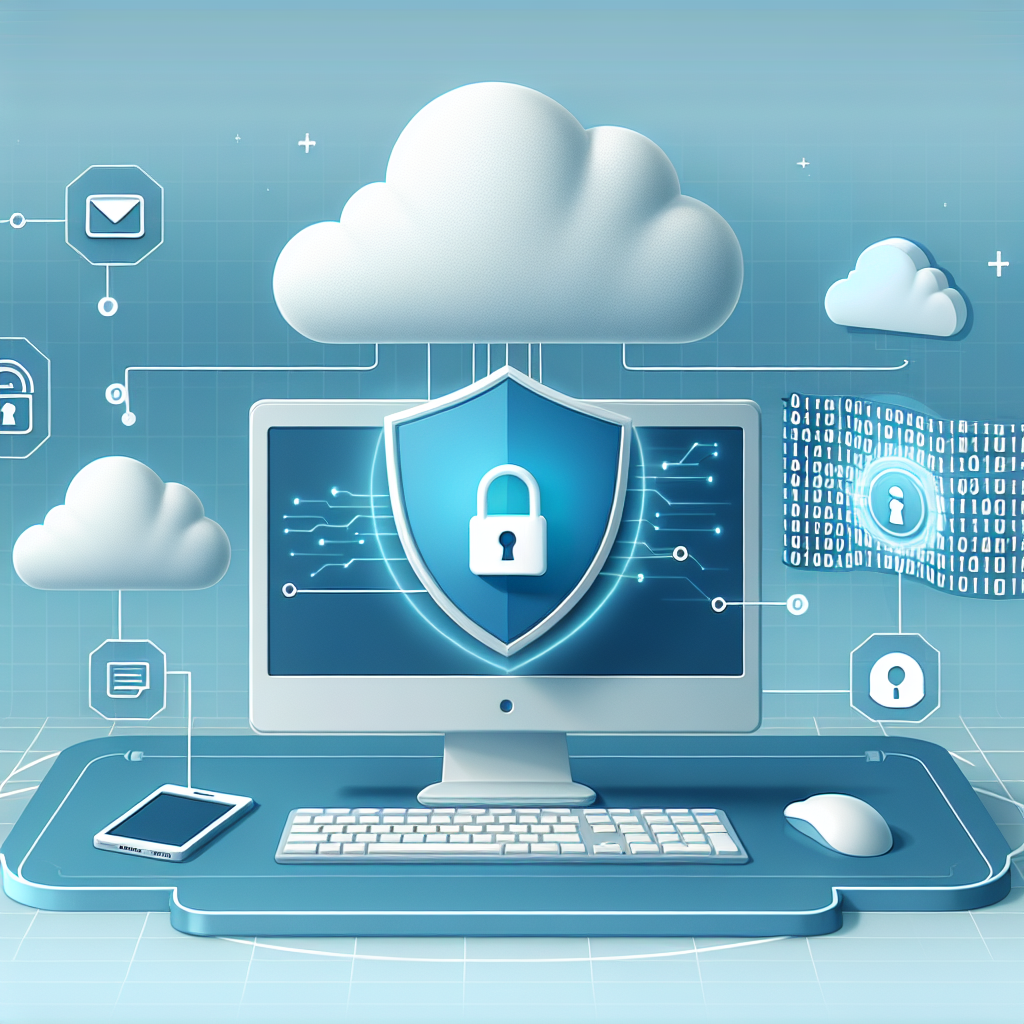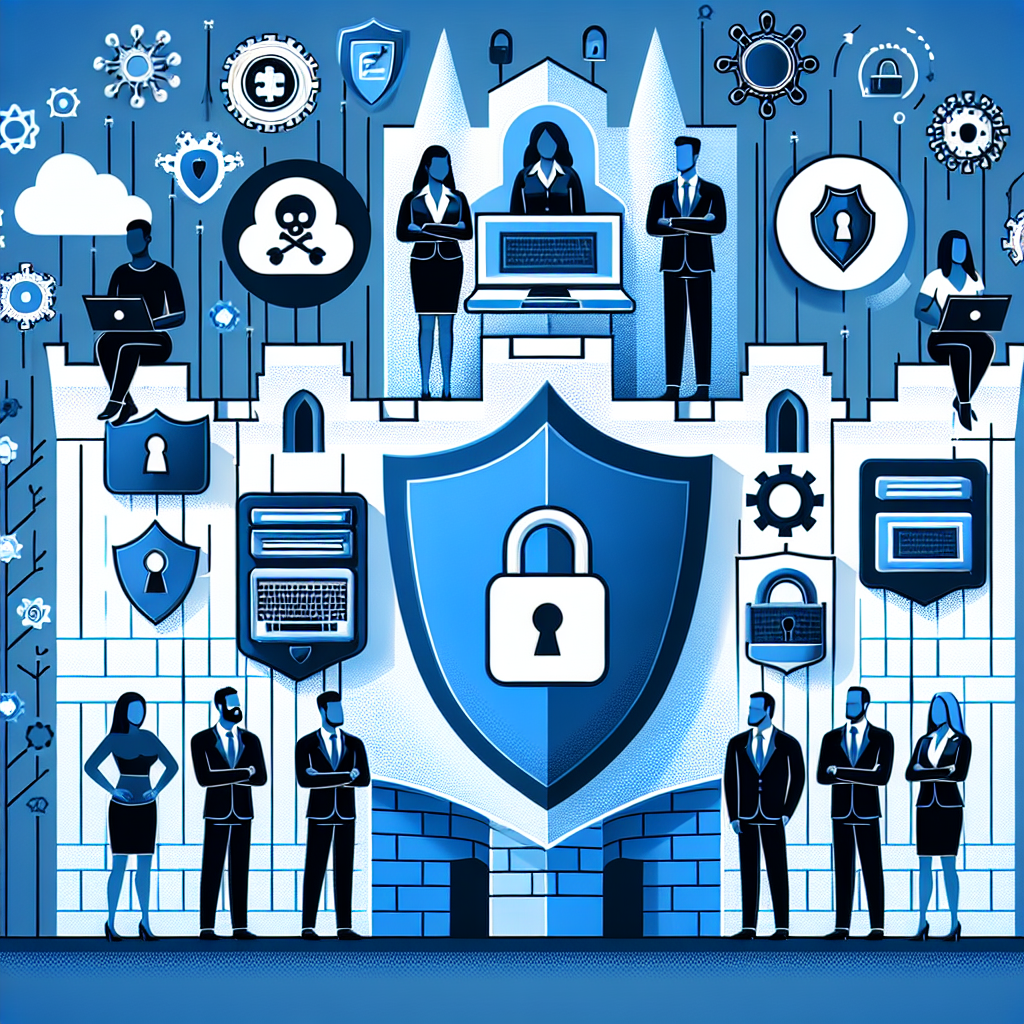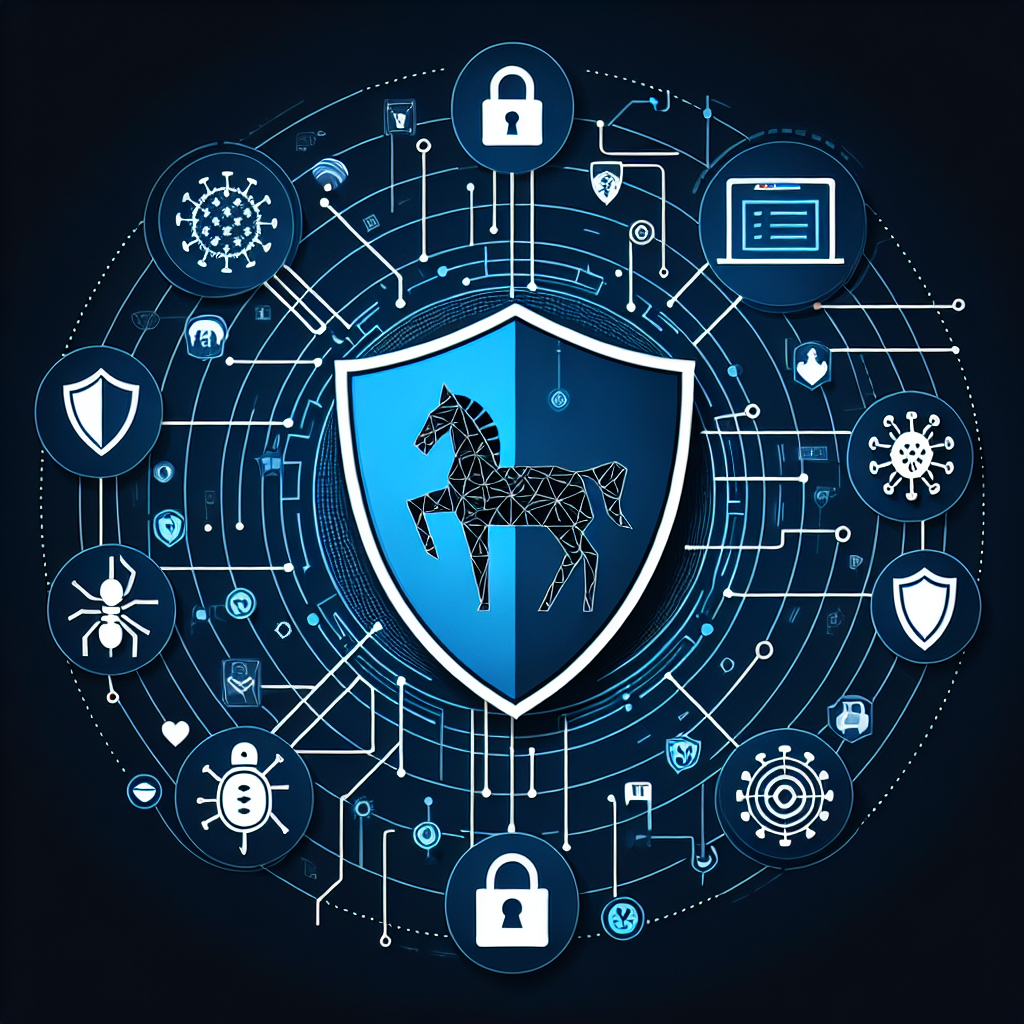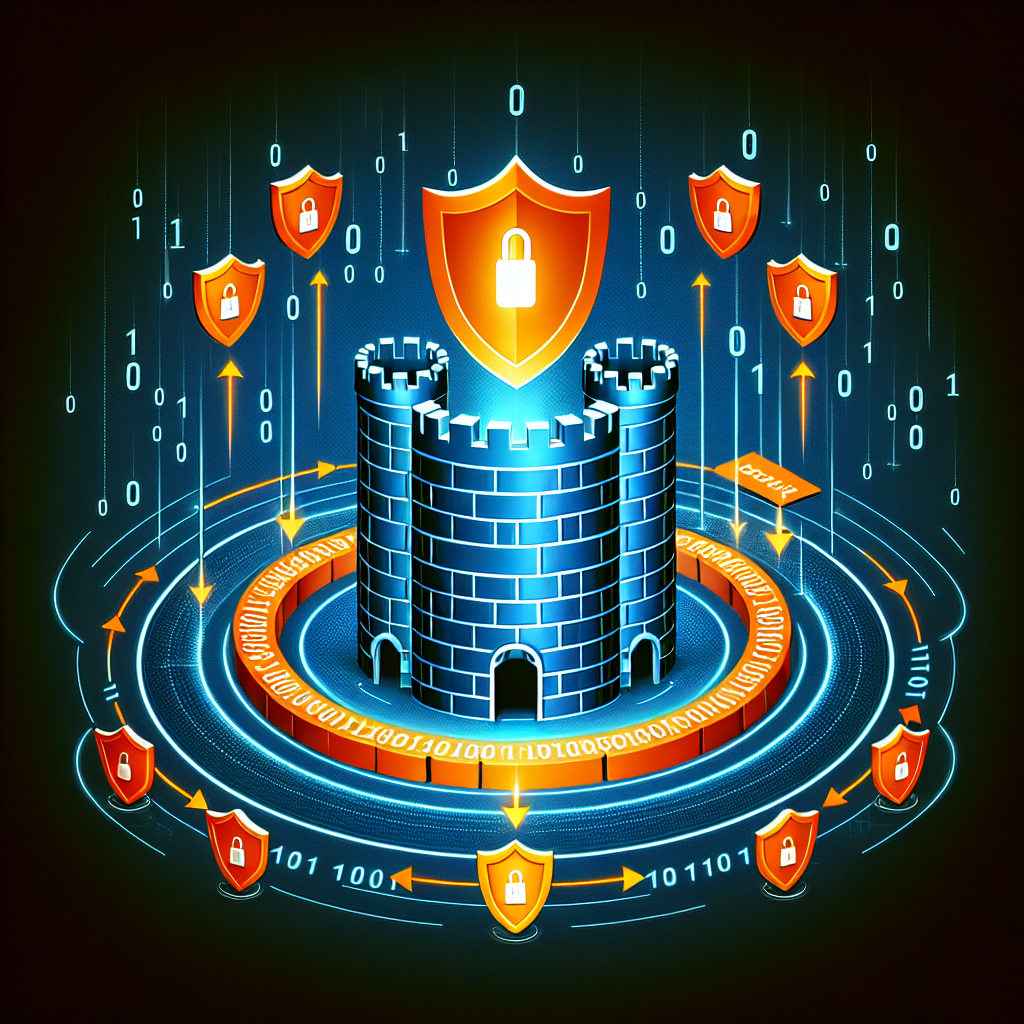Your cart is currently empty!
Tag: Protecting

Securing the Cloud: Best Practices for Protecting Data in a Cloud Environment
The use of cloud computing has become increasingly popular among businesses in recent years. Cloud services offer a range of benefits, including cost savings, scalability, and flexibility. However, the use of cloud services also carries certain risks, particularly when it comes to data security.Securing data in a cloud environment is crucial for businesses of all sizes. With cyber threats on the rise, it is important for organizations to implement best practices for protecting their data in the cloud. Here are some key strategies for securing the cloud:
1. Use strong encryption: Encryption is a fundamental aspect of data security in the cloud. By encrypting data both in transit and at rest, businesses can protect their sensitive information from unauthorized access. It is important to use strong encryption algorithms and ensure that encryption keys are securely managed.
2. Implement access controls: Controlling who has access to data in the cloud is essential for maintaining security. Businesses should implement strong access controls, such as multi-factor authentication, to ensure that only authorized users can access sensitive information. Additionally, businesses should regularly review and update access permissions to minimize the risk of unauthorized access.
3. Regularly update software and systems: Keeping software and systems up to date is critical for protecting data in the cloud. Outdated software can contain vulnerabilities that cybercriminals can exploit to gain access to sensitive information. By regularly updating software and systems, businesses can ensure that their data remains secure.
4. Monitor and audit cloud activity: Monitoring and auditing cloud activity can help businesses detect and respond to security threats in a timely manner. By monitoring user activity, network traffic, and system logs, businesses can identify suspicious behavior and take appropriate action to mitigate risks. Additionally, conducting regular security audits can help businesses identify vulnerabilities and address them before they are exploited by cybercriminals.
5. Backup data regularly: Despite implementing strong security measures, data breaches can still occur in the cloud. To minimize the impact of a data breach, businesses should regularly backup their data. By maintaining regular backups, businesses can quickly recover their data in the event of a security incident.
Securing data in the cloud requires a multi-faceted approach that combines technical controls, policies, and procedures. By implementing best practices for protecting data in a cloud environment, businesses can minimize the risk of data breaches and safeguard their sensitive information. Ultimately, investing in data security in the cloud is essential for maintaining the trust of customers and ensuring the long-term success of the business.

The Role of Technical Support in Cybersecurity: Protecting Your Business
In today’s digital age, cybersecurity is more important than ever. With the increasing number of cyber threats and attacks, it is crucial for businesses to have robust security measures in place to protect their sensitive data and information. One key aspect of cybersecurity that often goes overlooked is technical support.Technical support plays a vital role in ensuring that a business’s cybersecurity measures are up to date and effective. From setting up firewalls and antivirus software to monitoring for suspicious activity and responding to security incidents, technical support professionals are responsible for keeping a business’s digital assets safe from potential threats.
One of the main functions of technical support in cybersecurity is to provide ongoing maintenance and updates to security systems. This includes regularly patching software vulnerabilities, updating antivirus definitions, and ensuring that all security protocols are in place and functioning properly. By staying on top of these tasks, technical support professionals can help prevent potential security breaches and keep a business’s data safe from cybercriminals.
In addition to maintenance and updates, technical support also plays a crucial role in monitoring for suspicious activity and responding to security incidents. This involves setting up intrusion detection systems, monitoring network traffic for signs of unauthorized access, and investigating any potential security breaches. In the event of a security incident, technical support professionals are responsible for containing the threat, mitigating any damage, and restoring systems back to normal operation.
Furthermore, technical support can also provide training and education to employees on best practices for cybersecurity. This can include teaching employees how to recognize phishing emails, avoid clicking on suspicious links, and create strong passwords. By educating employees on cybersecurity best practices, businesses can help prevent human error from compromising their security measures.
Overall, the role of technical support in cybersecurity is crucial for protecting a business’s digital assets and maintaining the integrity of their data. By providing ongoing maintenance and updates, monitoring for suspicious activity, responding to security incidents, and educating employees on best practices, technical support professionals play a key role in safeguarding a business from potential cyber threats. Investing in strong technical support can help ensure that your business remains secure in an increasingly digital world.

Protecting Your Business from Data Loss: Strategies for Effective Backup and Recovery
Data loss can be detrimental to any business, leading to financial loss, reputational damage, and even legal issues. With the increasing reliance on digital data for daily operations, it has become more important than ever for businesses to have effective backup and recovery strategies in place to protect their valuable information. Here are some strategies to help protect your business from data loss:1. Regularly backup your data: One of the most basic but crucial strategies for protecting your business from data loss is to regularly backup your data. This means creating copies of your files and storing them in a secure location, either on-site or off-site. By backing up your data regularly, you can ensure that you have a recent copy of your information in case of a data loss event.
2. Consider using cloud storage: Cloud storage offers a convenient and secure way to backup your data. With cloud storage, your data is stored on remote servers maintained by a third-party provider, reducing the risk of data loss due to hardware failure or physical damage. Additionally, cloud storage allows you to access your data from anywhere with an internet connection, providing flexibility and convenience.
3. Implement a disaster recovery plan: In addition to regular data backups, businesses should also have a disaster recovery plan in place. This plan outlines the steps to be taken in the event of a data loss event, such as a cyber attack, natural disaster, or hardware failure. By having a disaster recovery plan in place, businesses can minimize downtime and quickly restore their operations after a data loss event.
4. Test your backup and recovery processes: It is important to regularly test your backup and recovery processes to ensure that they are working effectively. This includes testing the restoration of data from backups, as well as testing the implementation of your disaster recovery plan. By testing your processes regularly, you can identify any weaknesses or gaps in your backup and recovery strategies and address them before a data loss event occurs.
5. Educate employees on data security best practices: Employees play a crucial role in protecting your business from data loss. It is important to educate employees on data security best practices, such as using strong passwords, avoiding phishing scams, and securely storing and sharing data. By raising awareness among employees about the importance of data security, businesses can reduce the risk of data loss due to human error or negligence.
In conclusion, protecting your business from data loss requires a combination of proactive measures, including regular data backups, cloud storage, disaster recovery planning, testing processes, and employee education. By implementing these strategies, businesses can minimize the risk of data loss and safeguard their valuable information. Remember, it is not a matter of if a data loss event will occur, but when – so it is important to be prepared.

Protecting Your Personal Data: A Guide to Cybersecurity
In today’s digital age, protecting your personal data has never been more important. With cyber threats constantly evolving and becoming more sophisticated, it’s crucial to take proactive steps to safeguard your information from hackers and cybercriminals. Here are some tips to help you protect your personal data and enhance your cybersecurity:1. Use strong, unique passwords: One of the easiest ways for hackers to gain access to your personal data is through weak passwords. Make sure to use strong, complex passwords that include a mix of letters, numbers, and symbols. Additionally, avoid using the same password for multiple accounts, as this can make it easier for hackers to access all of your accounts if one is compromised.
2. Enable two-factor authentication: Two-factor authentication adds an extra layer of security to your accounts by requiring you to provide a second form of verification, such as a text message or email, in addition to your password. This makes it much harder for hackers to gain access to your accounts, even if they have your password.
3. Keep your software up to date: Software updates often include important security patches that fix vulnerabilities that hackers can exploit to access your personal data. Make sure to regularly update your operating system, web browser, and any other software you use to ensure that you have the latest security protections in place.
4. Be cautious of phishing scams: Phishing scams are a common tactic used by hackers to trick individuals into disclosing their personal information, such as login credentials or financial details. Be wary of unsolicited emails, text messages, or phone calls that ask for personal information or contain suspicious links or attachments. If in doubt, contact the company directly to verify the legitimacy of the communication.
5. Use a VPN: A virtual private network (VPN) encrypts your internet connection and masks your IP address, making it much harder for hackers to intercept your online activity and steal your personal data. VPNs are especially important when using public Wi-Fi networks, as these networks are often unsecured and can easily be compromised by cybercriminals.
6. Secure your devices: Make sure to secure your devices with a passcode or biometric authentication, such as fingerprint or facial recognition. Additionally, consider enabling device encryption to protect the data stored on your device in case it is lost or stolen.
By following these tips and implementing best practices for cybersecurity, you can protect your personal data and reduce the risk of falling victim to cyber threats. Remember, cybersecurity is an ongoing process, so make sure to stay informed about the latest threats and security measures to keep your data safe and secure.

Cybersecurity for Beginners: Tips for Protecting Your Personal Information Online
Cybersecurity for Beginners: Tips for Protecting Your Personal Information OnlineIn today’s digital age, it’s more important than ever to prioritize cybersecurity and protect your personal information online. With cyber threats becoming increasingly sophisticated, it’s crucial for individuals to take proactive steps to safeguard their data. Whether you’re new to cybersecurity or looking to enhance your online security practices, here are some tips for protecting your personal information online.
1. Use strong, unique passwords
One of the simplest yet most effective ways to enhance your online security is by using strong, unique passwords for each of your accounts. Avoid using easily guessable passwords like “123456” or “password,” and opt for complex combinations of letters, numbers, and special characters. Additionally, consider using a password manager to securely store and manage your passwords.
2. Enable two-factor authentication
Two-factor authentication adds an extra layer of security to your accounts by requiring a second form of verification, such as a one-time code sent to your phone. Enable two-factor authentication on all of your accounts whenever possible to reduce the risk of unauthorized access.
3. Be cautious of phishing scams
Phishing scams are a common tactic used by cybercriminals to trick individuals into disclosing their personal information. Be wary of unsolicited emails, messages, or phone calls that request sensitive information or prompt you to click on suspicious links. To protect yourself from phishing scams, always verify the authenticity of the sender before providing any personal information.
4. Keep your software up to date
Software updates often include security patches that address vulnerabilities and protect against potential cyber threats. Make sure to regularly update your operating system, applications, and antivirus software to ensure that you’re running the latest security updates.
5. Secure your devices and networks
Secure your devices by setting up passcodes, biometric authentication, or encryption to prevent unauthorized access. Additionally, secure your home Wi-Fi network with a strong password and enable network encryption to protect your data from potential intruders.
6. Limit the information you share online
Be mindful of the information you share on social media platforms and websites, as cybercriminals can use this information to target you for phishing attacks or identity theft. Avoid posting sensitive information such as your full name, address, phone number, or financial details online.
7. Monitor your accounts regularly
Regularly monitor your accounts for any suspicious activity or unauthorized transactions. If you notice any unusual activity, report it to the appropriate authorities and take immediate steps to secure your accounts.
By following these tips for protecting your personal information online, you can enhance your cybersecurity and reduce the risk of falling victim to cyber threats. Remember, cybersecurity is a shared responsibility, and it’s important for individuals to take proactive steps to safeguard their data in today’s digital world.

Disaster Recovery in the Digital Age: Strategies for Protecting Data and Systems
In today’s digital age, where businesses rely heavily on technology to operate, disaster recovery planning has become more important than ever. With the increasing frequency of cyber attacks, natural disasters, and other disruptions, it is crucial for organizations to have strategies in place to protect their data and systems.Disaster recovery refers to the processes and procedures that an organization puts in place to ensure that its IT infrastructure can quickly recover and resume normal operations after a disaster. This includes not only backing up data, but also having plans in place for restoring systems, applications, and networks in the event of a disruption.
One of the key strategies for protecting data and systems in the digital age is to regularly back up critical data. This means making copies of important files, databases, and applications and storing them in a secure location, either on-site or in the cloud. By backing up data regularly, organizations can minimize the risk of data loss in the event of a disaster.
Another important strategy is to implement robust security measures to protect against cyber attacks. This includes using firewalls, antivirus software, and encryption to safeguard data from unauthorized access. It is also important to regularly update software and systems to patch vulnerabilities and prevent security breaches.
In addition to backing up data and implementing security measures, organizations should also develop a comprehensive disaster recovery plan that outlines the steps to take in the event of a disruption. This plan should include details on how to restore systems, applications, and networks, as well as who is responsible for carrying out each task.
Testing the disaster recovery plan regularly is also crucial to ensure that it will work effectively when needed. By conducting mock drills and simulations, organizations can identify any weaknesses in their plan and make necessary adjustments to improve their readiness for a disaster.
Overall, disaster recovery planning is essential for protecting data and systems in the digital age. By implementing strategies such as regular data backups, robust security measures, and a comprehensive disaster recovery plan, organizations can minimize the impact of disruptions and ensure that they can quickly recover and resume normal operations in the event of a disaster.

Protecting Your Business: The Importance of Cybersecurity
With the rise of technology in the business world, cybersecurity has become increasingly important for protecting your business from potential threats. Cyber attacks can cause serious damage to your company, including financial loss, damage to your reputation, and loss of sensitive data. In today’s digital age, it is essential for businesses to prioritize cybersecurity to safeguard their operations and sensitive information.One of the most common types of cyber attacks is phishing, where hackers attempt to trick individuals into providing their personal or financial information. These attacks can come in the form of emails, messages, or even phone calls that appear to be from a legitimate source. By educating your employees on how to identify and avoid phishing attempts, you can reduce the risk of a data breach.
Another common threat businesses face is malware, which is malicious software designed to disrupt operations, steal sensitive information, or cause damage to your systems. To protect your business from malware, it is important to install antivirus software, regularly update your systems, and train your employees on safe internet practices.
In addition to phishing and malware, businesses also need to be wary of ransomware attacks, where hackers encrypt your files and demand a ransom for their release. To protect your business from ransomware, it is crucial to regularly back up your data and ensure your systems are secure and up to date.
Implementing strong cybersecurity measures is not only important for protecting your business from potential threats, but also for maintaining the trust of your customers. In today’s digital age, customers expect businesses to prioritize the security of their personal information. By investing in cybersecurity, you can demonstrate to your customers that you take their privacy and security seriously.
In conclusion, cybersecurity is crucial for protecting your business from cyber threats and safeguarding your sensitive information. By educating your employees, implementing strong security measures, and staying up to date on the latest threats, you can reduce the risk of a cyber attack and protect your business from potential harm. Remember, when it comes to cybersecurity, it is better to be proactive rather than reactive. Protect your business today to secure its future tomorrow.

Protecting Your Data: Tips for Implementing a Robust Backup and Recovery Strategy
In today’s digital age, data is the lifeblood of businesses. From customer information to financial records, companies rely on their data to operate effectively and efficiently. With the increasing threat of cyber attacks, natural disasters, and human error, it is more important than ever for businesses to implement a robust backup and recovery strategy to protect their data.A backup and recovery strategy is essential for safeguarding your data and ensuring business continuity in the event of a disaster. Here are some tips for implementing a strong backup and recovery strategy:
1. Identify critical data: The first step in developing a backup and recovery strategy is to identify your critical data. This includes any information that is essential for the day-to-day operations of your business, such as customer records, financial data, and intellectual property. By prioritizing your critical data, you can ensure that it is backed up regularly and securely.
2. Choose the right backup solution: There are various backup solutions available, including cloud-based backup, on-premise backup, and hybrid backup solutions. It is important to choose a backup solution that meets the needs of your business and provides the level of security and reliability required to protect your data.
3. Implement a regular backup schedule: Regular backups are essential for ensuring that your data is protected and up-to-date. Establish a backup schedule that meets the needs of your business, whether that be daily, weekly, or monthly backups. It is also important to test your backups regularly to ensure that they are functioning properly and can be restored in the event of a disaster.
4. Secure your backups: Protecting your backups from unauthorized access is crucial for safeguarding your data. Implement strong encryption and access controls to ensure that only authorized personnel can access your backups. It is also important to store your backups in a secure location, such as a data center or off-site facility, to protect them from physical threats.
5. Develop a comprehensive recovery plan: In addition to backing up your data, it is important to develop a comprehensive recovery plan that outlines the steps to take in the event of a data loss or disaster. This plan should include procedures for restoring your data, notifying stakeholders, and resuming business operations as quickly as possible.
By following these tips and implementing a robust backup and recovery strategy, you can protect your data and ensure business continuity in the face of potential threats. Don’t wait until it’s too late – start implementing a backup and recovery strategy today to safeguard your most valuable asset: your data.

Protecting Your Digital World: A Guide to Cybersecurity
In today’s digital age, protecting your online presence and personal information is more important than ever. With cyber attacks becoming increasingly common, it’s crucial to take steps to safeguard your digital world. This guide to cybersecurity will help you navigate the complex landscape of online threats and keep your information safe.1. Use strong, unique passwords: One of the simplest ways to protect your online accounts is to use strong, unique passwords for each one. Avoid using easily guessable passwords like “123456” or “password,” and consider using a password manager to keep track of all your login information.
2. Enable two-factor authentication: Two-factor authentication adds an extra layer of security to your accounts by requiring a second form of verification, such as a text message or fingerprint scan. Enable this feature wherever possible to make it harder for hackers to access your accounts.
3. Keep your software up to date: Software updates often contain important security patches that can protect your devices from vulnerabilities. Make sure to regularly update your operating system, antivirus software, and any other programs you use to keep your systems secure.
4. Be cautious of phishing attacks: Phishing attacks are a common tactic used by cybercriminals to trick users into revealing their personal information. Be wary of emails, texts, or messages that ask for sensitive information or contain suspicious links, and never click on links from unknown sources.
5. Secure your network: Make sure your home Wi-Fi network is secure by using a strong password and enabling encryption. Consider using a virtual private network (VPN) when connecting to public Wi-Fi networks to protect your data from potential eavesdroppers.
6. Monitor your accounts: Regularly review your bank statements, credit reports, and online accounts for any suspicious activity. If you notice any unauthorized charges or unusual behavior, report it immediately to prevent further damage.
7. Backup your data: In case of a cyber attack or data breach, it’s important to have backups of your important files and documents. Consider using a cloud storage service or an external hard drive to regularly backup your data and ensure you can recover it in case of an emergency.
By following these cybersecurity tips, you can protect your digital world and keep your personal information safe from cyber threats. Remember to stay vigilant and proactive in safeguarding your online presence, and don’t hesitate to seek help from cybersecurity professionals if you ever feel unsure about your security measures. Stay safe online!

Protecting Your Personal Information: A Guide to Cybersecurity for Individuals
In today’s digital age, protecting your personal information has become more important than ever. With the rise of cybercrime and data breaches, it’s crucial for individuals to take proactive steps to safeguard their sensitive data. From financial information to personal details, hackers and identity thieves are constantly on the lookout for opportunities to exploit vulnerabilities and steal valuable information.One of the first steps in protecting your personal information is to use strong, unique passwords for all of your online accounts. Avoid using easily guessable passwords such as “password123” or your birthday, and instead opt for a combination of letters, numbers, and special characters. Additionally, consider using a password manager to securely store and generate complex passwords for each of your accounts.
Another important aspect of cybersecurity for individuals is to be cautious of phishing scams. These fraudulent emails, texts, or phone calls are designed to trick you into revealing sensitive information or downloading malicious software. Always verify the legitimacy of a sender before clicking on any links or providing any information, and avoid sharing personal details over unsecured networks.
It’s also crucial to keep your devices and software up to date with the latest security patches. Cybercriminals often exploit known vulnerabilities in outdated systems to gain access to your information, so regularly check for updates and install them promptly. Additionally, consider using security software such as antivirus and firewall protection to further safeguard your devices from malware and other threats.
When shopping online or sharing personal information, always look for secure websites with HTTPS encryption. This ensures that your data is transmitted securely and cannot be intercepted by hackers. Avoid entering sensitive information on unsecured websites or public Wi-Fi networks, as these can be easily compromised by cybercriminals.
Lastly, be mindful of the information you share on social media and other online platforms. Avoid posting sensitive details such as your full name, address, or financial information, as this can make you an easy target for identity theft. Additionally, regularly review your privacy settings to control who can see your posts and limit the amount of personal information that is publicly available.
By taking proactive steps to protect your personal information and practicing good cybersecurity habits, you can reduce the risk of falling victim to cybercrime. Stay informed about the latest threats and security measures, and always remain vigilant when it comes to safeguarding your sensitive data. Remember, your personal information is valuable – so take the necessary precautions to keep it safe.
